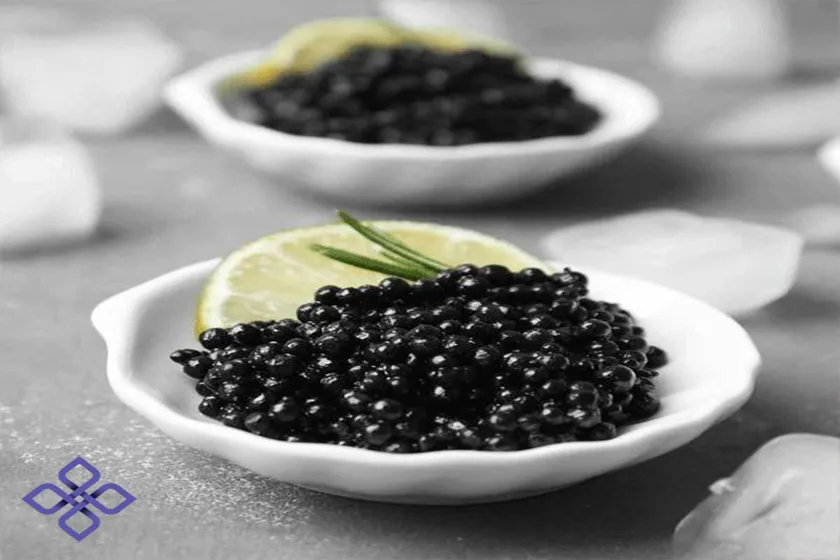
History
Caviar is one of the most expensive foods in the world. Caspian Sea as the largest source of sturgeon in the world, which supplies more than 90% of the world's caviar. The main species of sturgeon in the Caspian Sea are the sturgeon, the Russian sturgeon, or the Chalbash, the Persian sturgeon, the sturgeon, and the ozone sturgeon. The Caspian Sea also accounts for 93% of the world's caviar and sturgeon reserves. Beluga sturgeon, the Starry sturgeon, the Russian sturgeon, the Persian sturgeon, and the golden sturgeon. The worthiness of sturgeon is not for its meat, but because of its eggs, which are known as caviar or “black pearl”. Golden, red, and black caviar are three types of caviar, among which black caviar is the most valuable, although the nutritional value of all is more or less the same. While black caviar is mostly known in Iran and southern Russia, red caviar is most popular in Siberia and East Asia.

Caviar is Persian and from the word khagavar means small egg. Caviar is known as black pearl. Caviar is the unfertilized egg produced by the ovaries of the female sturgeon. The value of these fish, in addition to meat, is due to their eggs, which are known as black pearls. It takes between 12 and 16 years to get caviar from a fish. In the past, sturgeon were anesthetized with a plastic hammer, and then the caviar was taken out and the meat was sold. History of Iranian caviar The history of Iranian caviar has a long history and according to researchers dates back to the Median era. But this precious asset, which is very famous in the world, has attracted a lot of greed throughout history. History of caviar industry in Iran There is not much evidence of Iranian caviar in the past. Herodotus mentions the caviar of the Caspian Sea in his writings. The Chinese entered the industry in the 10th century and raised fish in the Yangtze River. Some evidence suggests that sturgeon were taken to Ekbataneh, the site of the Medes, after salinization. For the Russians, too, caviar was so valuable that the image of a sturgeon was struck on copper coins. During the Qajar dynasty and the Treaty of Turkmenchay in 1828, the Russians dominated the southern shores of the Caspian Sea and took over the Iranian caviar industry. , A contract to establish a joint fishing company. According to that agreement, the shores of the Caspian Sea and important inland rivers were assigned to this company for 25 years. This contract was valid until 1331, in which the National Iranian Fisheries was declared. Years of Russian and then Soviet intervention in the Caspian Sea led to overfishing on the southern shores of the sea, which was seen as booty, reducing the generation of many fish.
